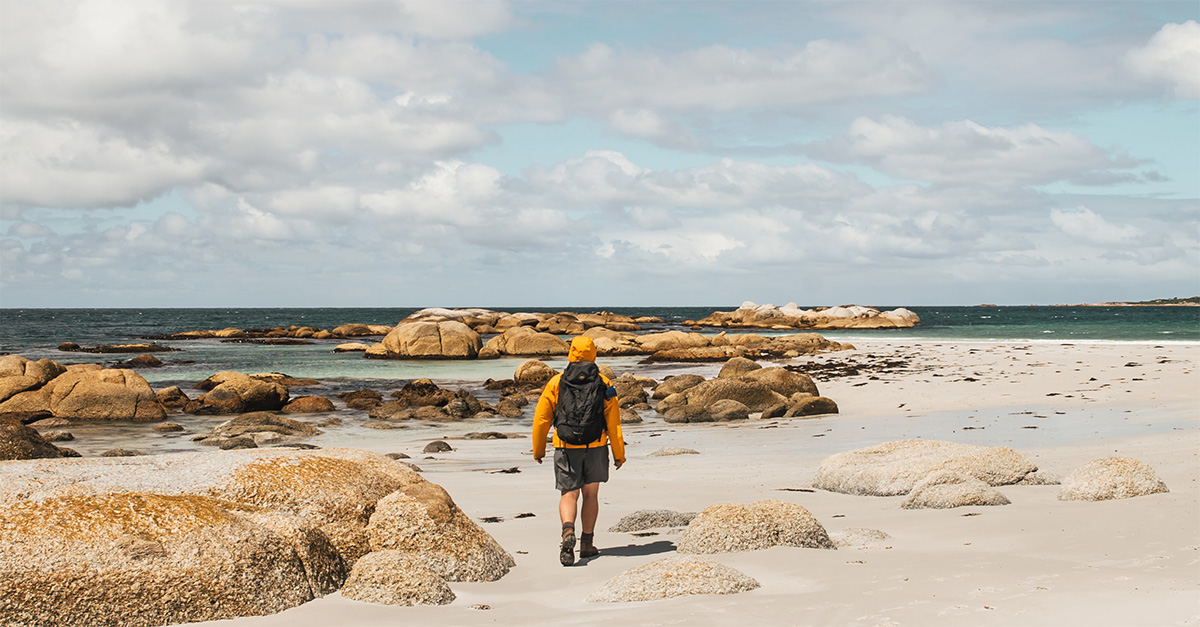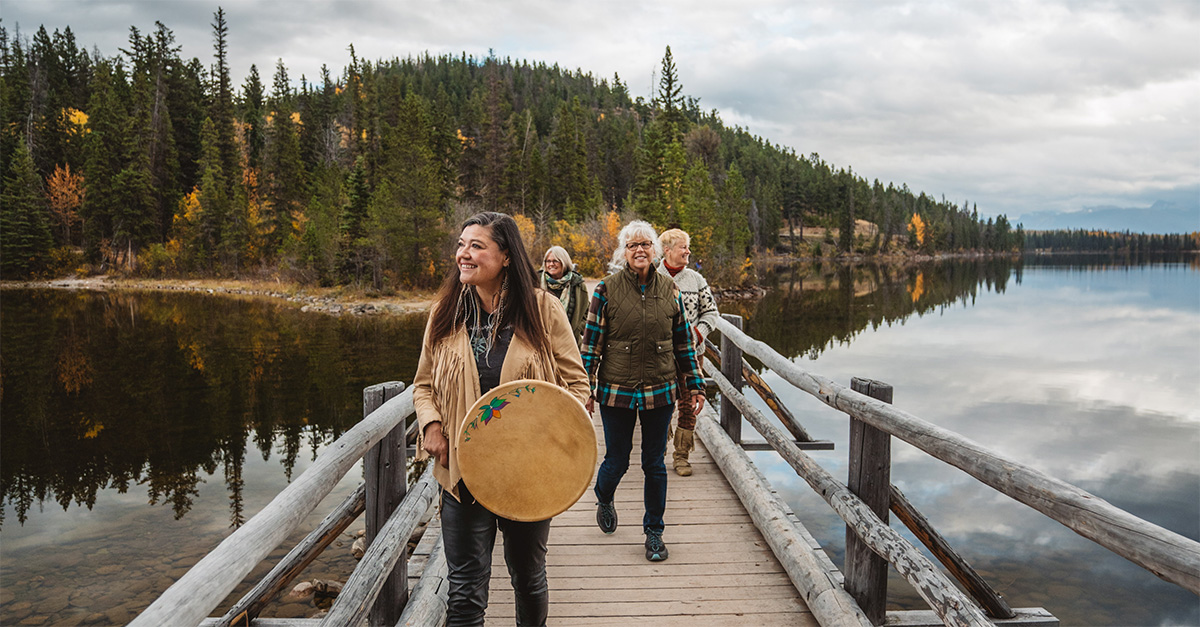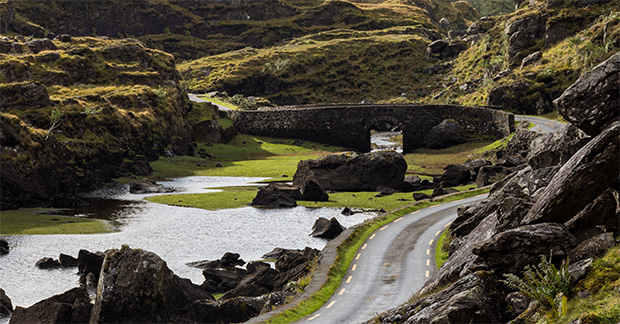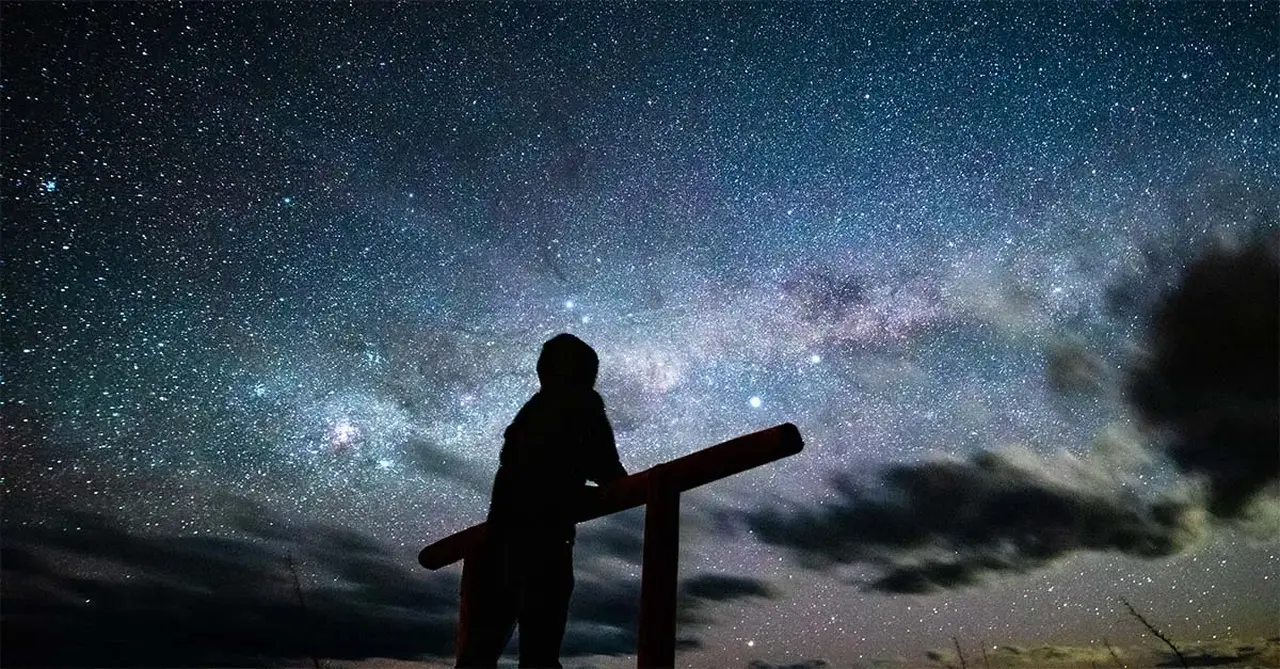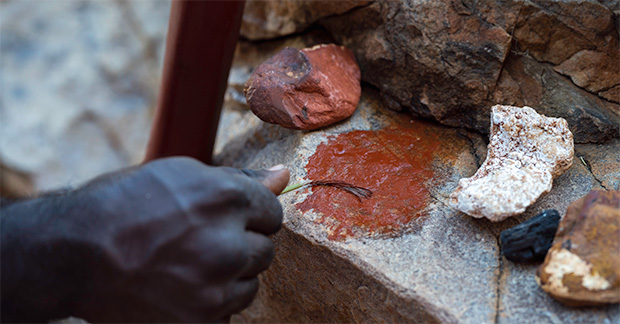You are viewing 1 of your 2 free articles
Wandering Tasmania’s story-filled wukalina Walk
Tasmania’s wukalina Walk is one of a growing number of immersive Aboriginal-guided experiences
Click here to download and save as a PDF
It’s nearly 5pm and the winter sun is starting to sink below the horizon as we walk through the Tasmanian bush. There are no boardwalks or tarmacked tracks here – everything is as nature intended, the paths forged by the kangaroos and wallabies that live in this wild, remote part of northeast Tasmania.
The changing hues of the grasses and the silhouettes of banksia and peppermint trees against a dusky pink sky make the end of our first day’s hike on the wukalina Walk particularly atmospheric.
We’ve spent the day with palawa guides Nathan and Harley Jac, hiking through northeast Tasmania’s Mount William National Park – also known as Trawlwoolway Country – to the 216m-high summit of wukalina/Mount William.
The entirely Indigenous-owned and operated wukalina Walk is one of a growing number of commissionable Aboriginal-guided experiences available for clients as part of Tourism Australia’s Discover Aboriginal Experiences collective, which has grown since 2018 from 37 to 55 business offering experiences across Australia.
Travellers are increasingly seeking out these types of experiences. In 2023-24, 1.1 million trips made to Australia by international visitors incorporated a First Nations activity, according to a recent report by the Australian government – a significant increase from 700,000 in 2013-14.
The wukalina Walk is particularly special, as clients spend four days in a small group with guides, offering the opportunity to learn about Aboriginal culture in a much deeper way. It’s by far one of the most memorable travel experiences I’ve had in years.
Within minutes of meeting us, Nathan tells us he’s comfortable with us asking whatever questions we’d like. “If you ever think you shouldn’t ask a question, please ask,” he says. But he’s quick to highlight that while the walk is about cultural exchange and historical storytelling, there’s a wellness element too.
“The walks are about being present with yourself and that opportunity to recharge. And reciprocity – we might learn something from you too.”
That element of mindfulness is certainly there as we near the camp on the first evening. As the skies begin to darken, Nathan advises us to keep our torches off so our eyes adjust to the lower light.
And as we keep walking through the bush, towards the coast, I’m surprised by how much I can see in the light of the nearly full moon. Surrounded by nature, hours since we had mobile phone service, I feel completely immersed in the adventure.
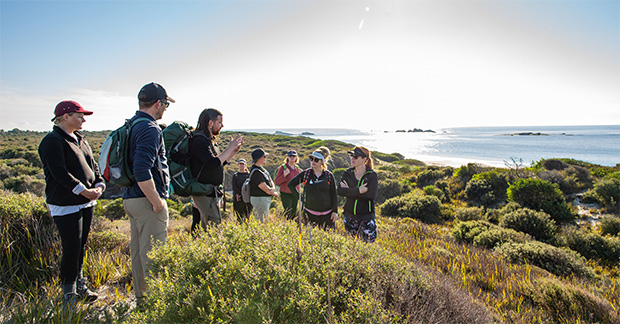
wukalina Walk camps
We eventually reach our camp – krakani lumi, which means resting place – in a coastal heath. The domed timber huts are built using blackwood in the style of traditional palawa huts, a collaboration between a Hobart-based architect, the Land Council and the broader Aboriginal community.
The main social space is open-fronted, facing a firepit, with separate, solar-powered kitchen and bathroom areas and five comfortable sleeping huts. It’s among the cosier glamping experiences I’ve had, with a thick mattress and kangaroo skins adding warmth to the bedding set-up, and a glowing, colour-changing orb for lighting to help us find our way on the timber paths around the camp after dark.
Once we’re settled, we’re warmly greeted by Mel, who has prepared fresh oysters, grilled octopus and scallops, and a selection of tasty salads for us. Mel’s cooking, using traditional ingredients, is a highlight here: a ploughman’s lunch with local correa alba leaves in the relish; a seafood chowder made with locally caught mussels, white fish and squid; muttonbird curry and wallaby and possum stew for the adventurous, mopped up with fresh-baked damper bread.
Conversations over dinner aim to create shared understanding and connection. We learn about some of the atrocities Aboriginal people in Tasmania endured under British colonial rule, and some of the injustices they still face today.
Despite the confronting subject matter, Mel’s attitude is inspiring, telling us that she simply wants people to share the joy of reconnecting with the land here, where the palawa people lived for thousands of years before Europeans arrived.
“People always say you’re so positive, after everything. With all that adversity, it actually makes me stronger. I think, ‘Look at us go’,” she says. “It makes you more proud of your culture. I want people to feel what I feel when I’m back here on country – grounded.”
To the beach
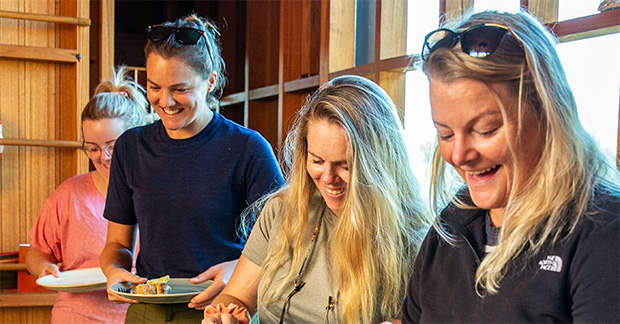
Breakfast is scrambled eggs with samphire and basil pesto, along with steaming mugs of coffee, which we linger over before taking the short walk to see sand covered in kangaroo, wombat and all manner of bird tracks.
Nathan points out red-capped plovers, oystercatchers and cormorants as we follow a headland round to a rockier area, with a mound of shells piled high on a sand dune – the only sign that, until around 250 years ago, this was a site of human habitation. This community could have been there for 10,000 or more years, Nathan tells us.
As we pause for meditation and breathwork on the beach, toes in the sand, eyes closed and the sun on our faces, Nathan begins to play a pair of wooden clapsticks, a hand-carved wooden percussive instrument. He invites us to imagine people living and enjoying themselves here all those years ago, with children running wild, and to feel gratitude for the time we’ve spent in this place.
As the meditation draws to a close and we walk barefoot to the water’s edge to share a flask of fragrant, herby kunzia and round leaf tea, we spot a pod of dolphins out at sea.
The beach is practically empty aside from us, the air so clean in this corner of the world. It feels such a privilege to be learning about one of the world’s oldest cultures first-hand – especially in a place as beautiful and remote as this.
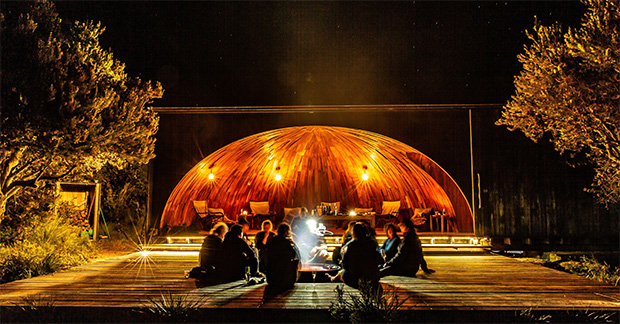
Book it
Audley Travel offers an 18-day tailor-made trip, Australia’s great walks: Tasmania & Western Australia, priced from £9,815 per person, including the four-day guided wukalina Walk, plus accommodation in Hobart, Launceston, Margaret River, Fremantle and Perth, based on two sharing. Price includes flights, transfers and excursions, for departures in 2025.
audleytravel.com
Ask the expert

Nicole Mitchell, executive officer, Discover Aboriginal Experiences
“Today’s travellers are seeking authentic connections to the land and sea and the wukalina Walk offers a rare window into Tasmania/lutruwita’s Aboriginal cultures, taking place on cultural homeland. All the experiences on Tourism Australia’s Discover Aboriginal Experiences programme are Aboriginal-guided, bringing landscapes and cultures to life through personal stories. And the diversity of experiences is as vast as Australia’s landscapes. In addition to walking tours, adventure seekers can join Aboriginal guides on quad bikes to explore the largest moving sand dunes in the southern hemisphere on the Central Coast of New South Wales, while learning about Indigenous culture.
Food enthusiasts can discover ingredients like quandong, Davidson’s plum, lemon myrtle and wattleseed, featured in restaurants worldwide. Art lovers can visit contemporary galleries showcasing extensive Indigenous art collections and explore ancient rock paintings or create their own canvases under the guidance of Aboriginal artists.”
3 of the best Tasmanian experiences
Pair with a stay at Stillwater Seven in Launceston (also sold through Audley Travel). The boutique riverside hotel, set in an 1830s flour mill, has a restaurant serving Tasmanian produce and wines.
stillwater.com.au
Cultural Attractions of Australia has commissionable art and dining experiences at the quirky Mona (Museum of Old and New Art), accessed from Hobart by ferry. These start from £261 for Mona Like a Rockstar, which includes art invigilator commentary, plus a cocktail breakfast and wine-paired lunch.
culturalattractionsofaustralia.com
Book a scenic seaplane flight over Tasmania’s remote southern wilderness with Above and Beyond flights, which take off from Hobart waterfront.
aboveandbeyond.flights
Need to know
? The wukalina Walk lasts four days, with two nights at krakani lumi and the third night in a house at the Bay of Fires/larapuna.
? Sell to clients with moderate fitness levels who are comfortable carrying what they’ll need for four days. Backpacks are provided.
? Recommend waterproof footwear and gaiters as groups may need to walk through shallow water.

PICTURES: Tayla Gentle; Jillian Mundy; Tourism Tasmania; Tourism Tasmania/Rob Burnett

